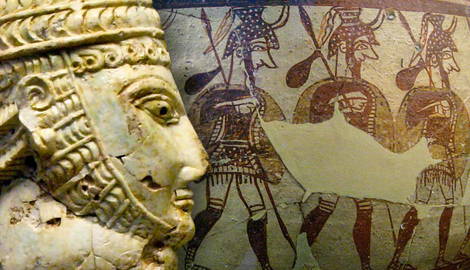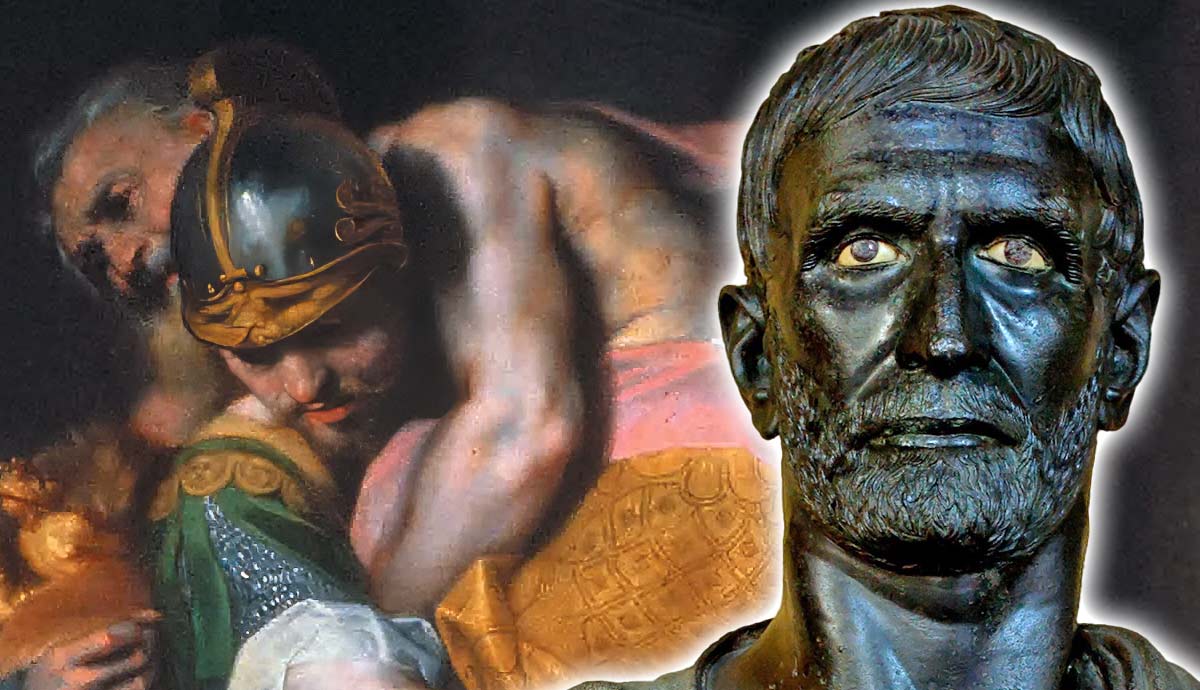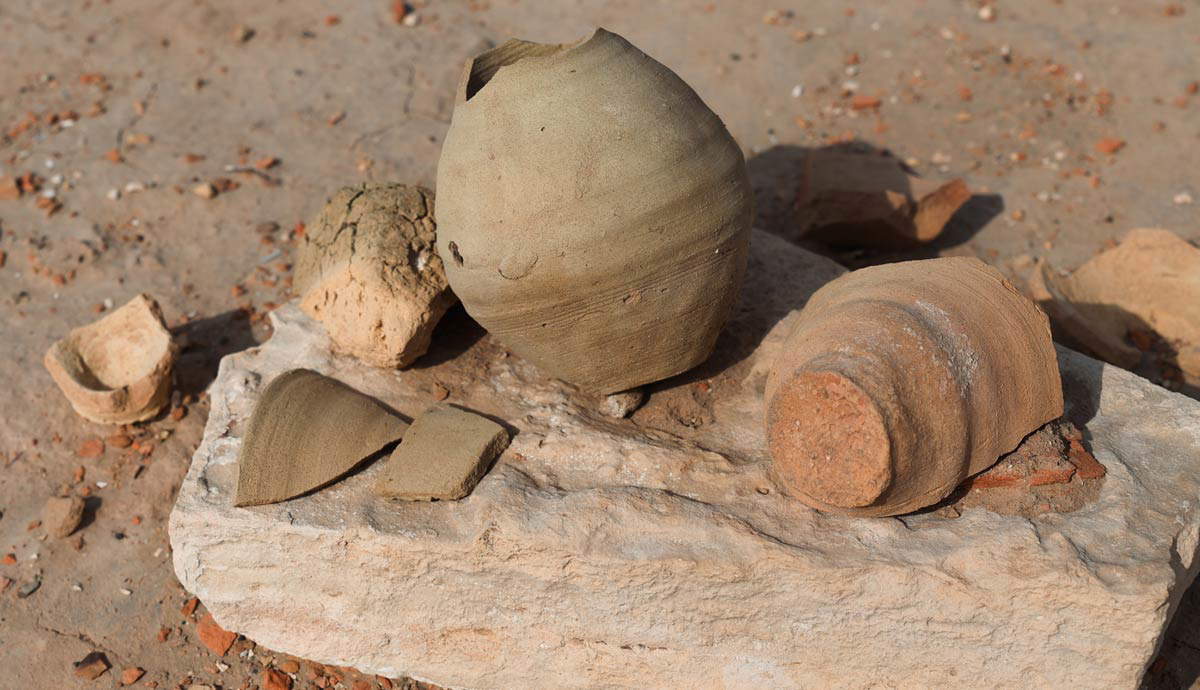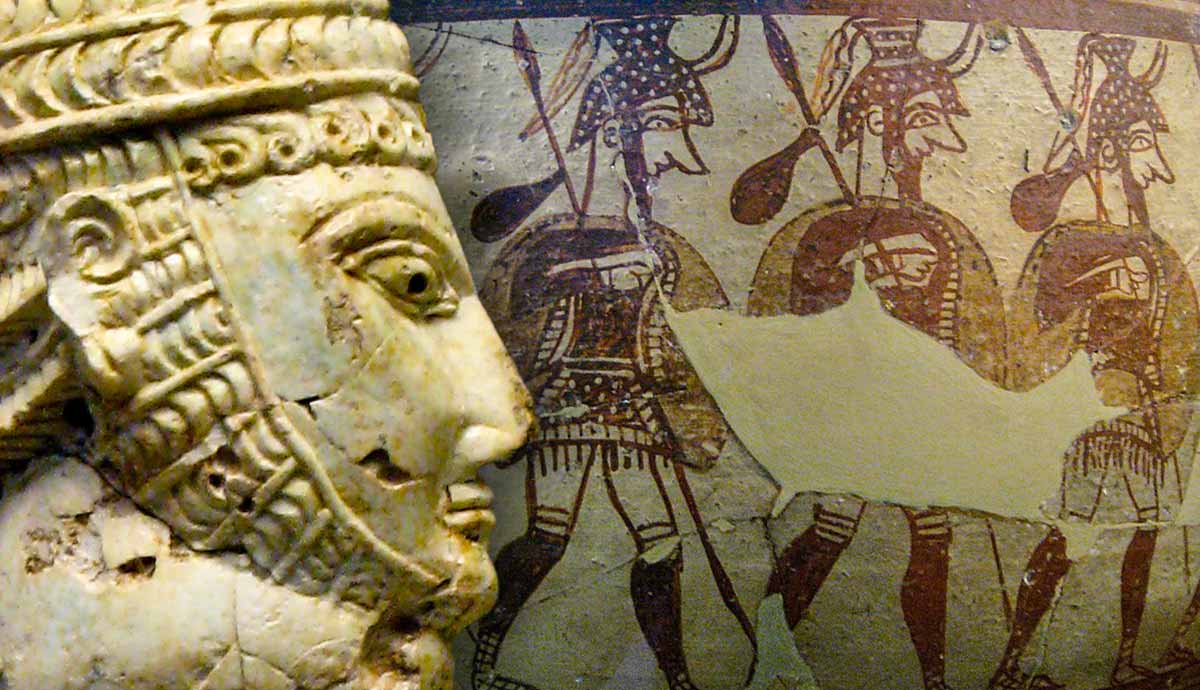
Homer’s Iliad is, by far, the most famous source for the legend of the Trojan War. He also allegedly composed the Odyssey, telling the story of one Greek commander’s attempt to get home after the war. According to the traditional view, the Trojan War occurred in c. 1200 BCE, placing it in the Mycenaean Era, right at the end of the Bronze Age. For many decades, scholars interpreted Homer’s description in that light, concluding that his descriptions match that historical era. But modern scholarship is beginning to question that view.
Supposed Bronze Age Features in Homer’s Iliad
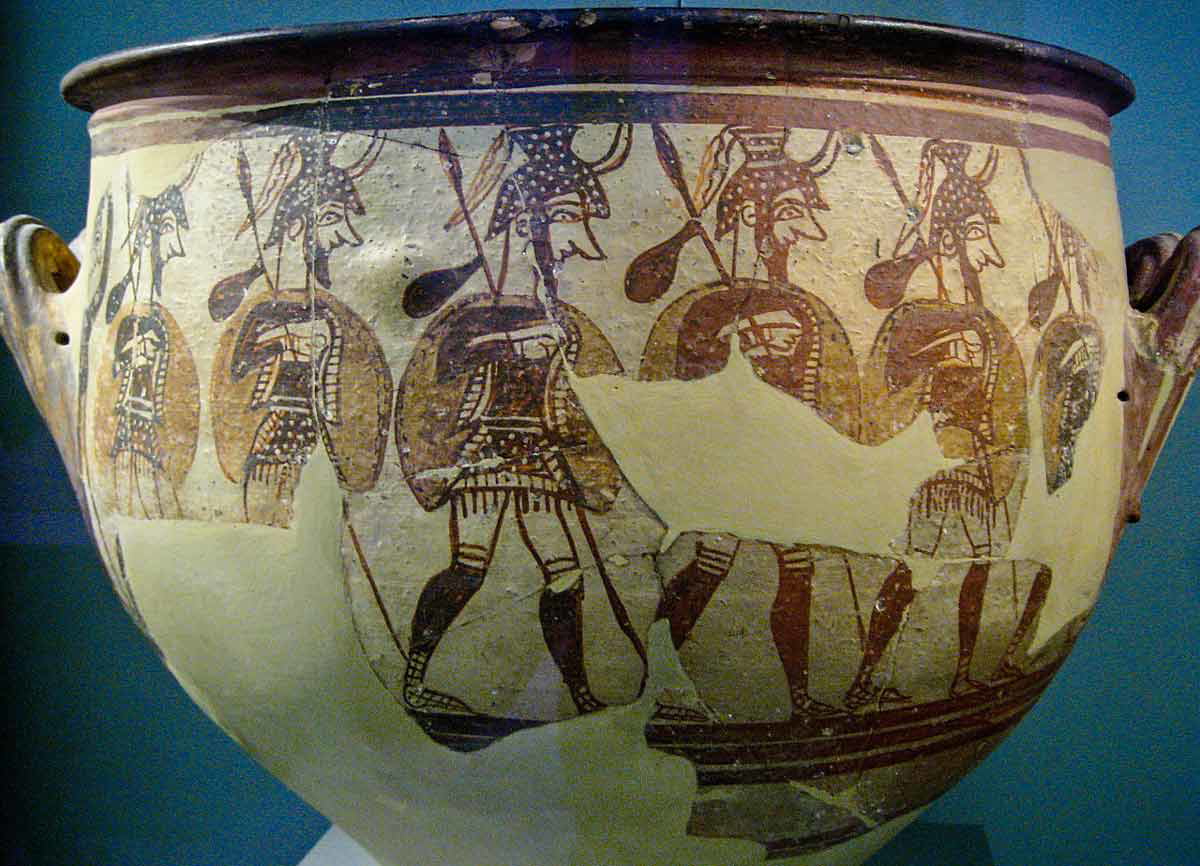
Based on the assumption that Homer was describing a Bronze Age conflict, it was not difficult for early scholars to identify features in the Iliad that seemed to match that time period. The fact that Homer’s descriptions overwhelmingly matched his own time period was not viewed as important. That could easily be explained as Homer simply including anachronisms, much like how the writers of the Arthurian legends often included features from their own time. Instead of focusing on those parts, scholars preferred to focus on the parts that seemed to match the Bronze Age.
Such features of the Iliad include the fact that the heroes fight with bronze weapons rather than iron weapons. They are also shown to have very long spears, like those used in the Mycenaean era. Furthermore, Ajax is described as having a shield which reached down to his feet, seemingly matching the tower shields of the Mycenaeans. The boar’s tusk helmet described by Homer is a remarkable item straight from the Bronze Age. Regarding the use of chariots in the Iliad, this would appear to be a poorly remembered trace of Mycenaean warfare.
A New Approach to Homer’s Iliad
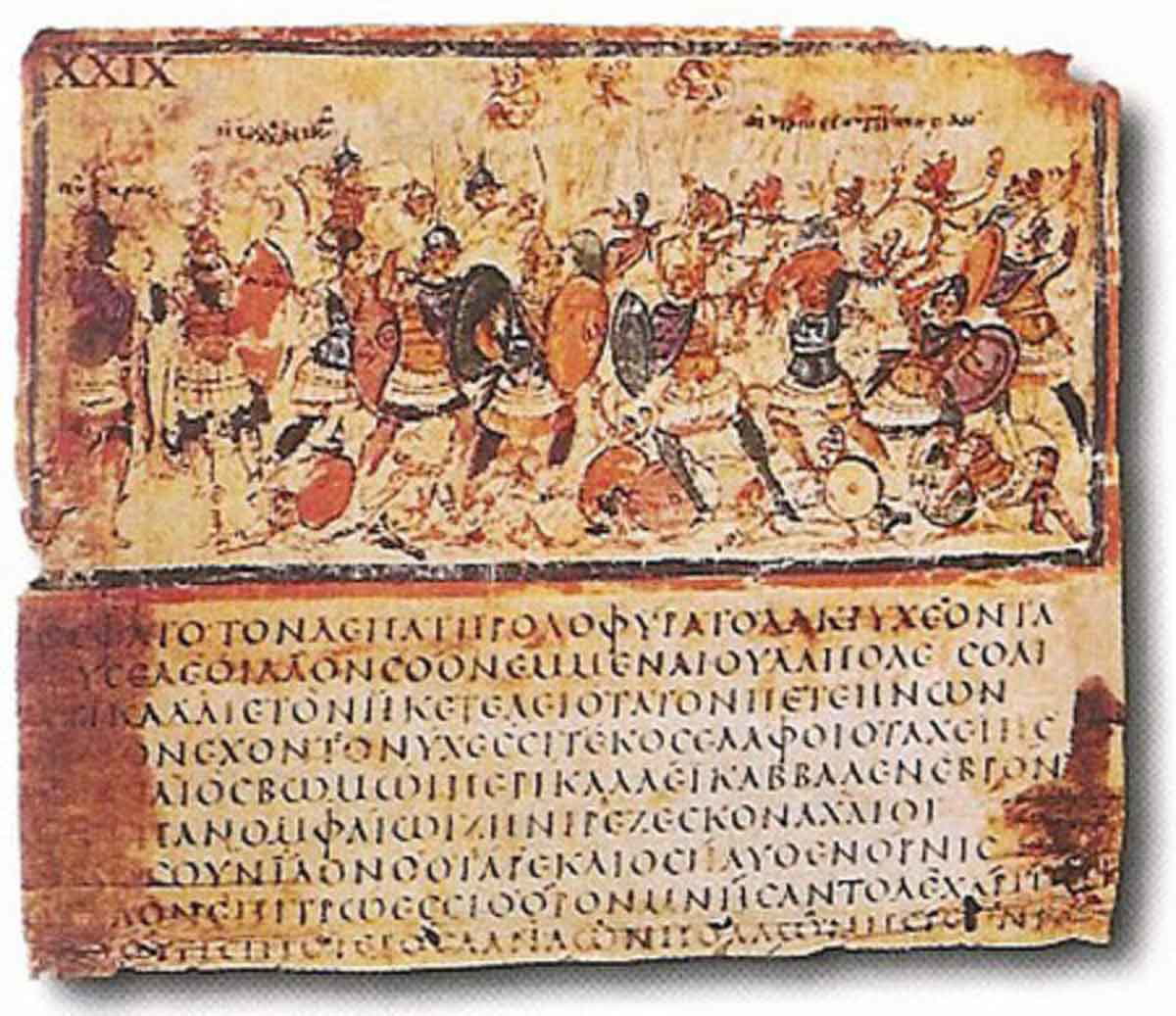
Generally speaking, the aforementioned arguments are still widely seen in popular sources. To be sure, there are still some historians who hold to those examples as genuine traces of the Bronze Age that have been preserved in Homer’s poems. However, on the whole, scholars have moved on. The general consensus today among Homeric scholars is that the Iliad essentially reflects the world at the time in which it was composed, albeit with plenty of artistic flourish. One scholar who contributed significantly to this shift in perspective is Hans van Wees. He argued that all the features of warfare in the Iliad can be understood entirely in the context of the era between 700 and 650 BCE, without any Bronze Age influence whatsoever.
The driving motivation behind this shift in perspective is partly the recognition that Homer was not writing a historical account. Rather, he was writing a fanciful story involving gods and goddesses. Therefore, we need to interpret his descriptions in a way that is consistent with the genre of the Iliad.
The Tower Shield and Mycenaean Spears
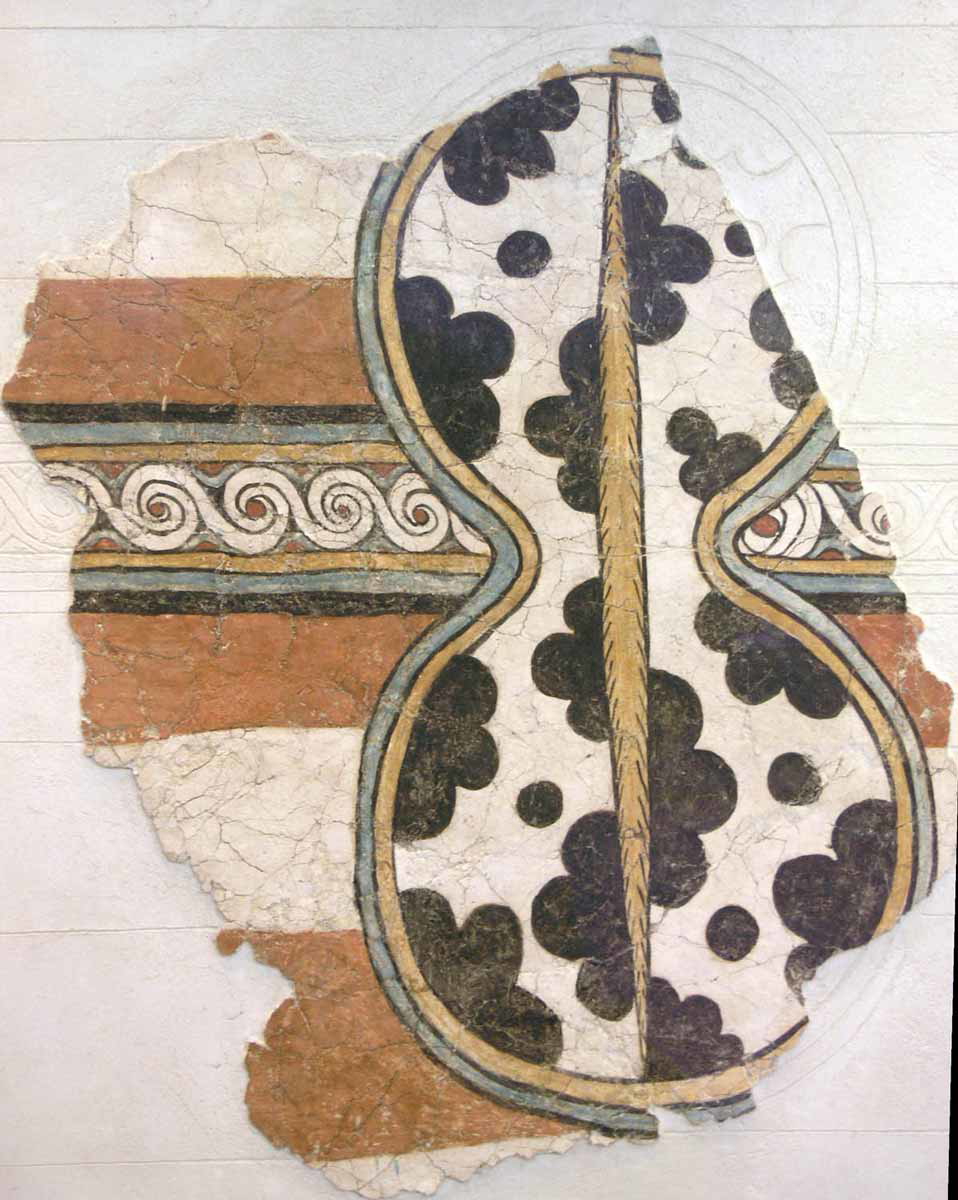
One good example of this issue is seen in the case of the supposed tower shield and the Mycenaean spears. It is true that Homer describes Ajax’s shield as going all the way down to his feet. However, every time Homer refers to the shape of the shields used by the Greeks, he always refers to them as being circular. He specifically uses a word meaning that they were equal on all sides. He never gives any suggestion that they were using tall tower shields or figure-of-eight shields. So, how should we interpret this reference to Ajax’s shield going down to his feet? In harmony with the genre of the Iliad, it is reasonable to conclude that Homer was simply not concerned about practical limitations. Various other examples of things that are obviously physically impossible or impractical occur in the Iliad. Therefore, although it would have been impractical, Homer was evidently just saying that Ajax’s shield was very large—not that it was a tower shield.
The same interpretation can easily be applied to the excessively long spears that Homer describes. Rather than seeing them as a trace of the long spears of the Mycenaean Greeks, we can easily see these as just exaggerated versions of real-world equipment that Homer knew.
Bronze Weapons and the Boar’s Tusk Helmet
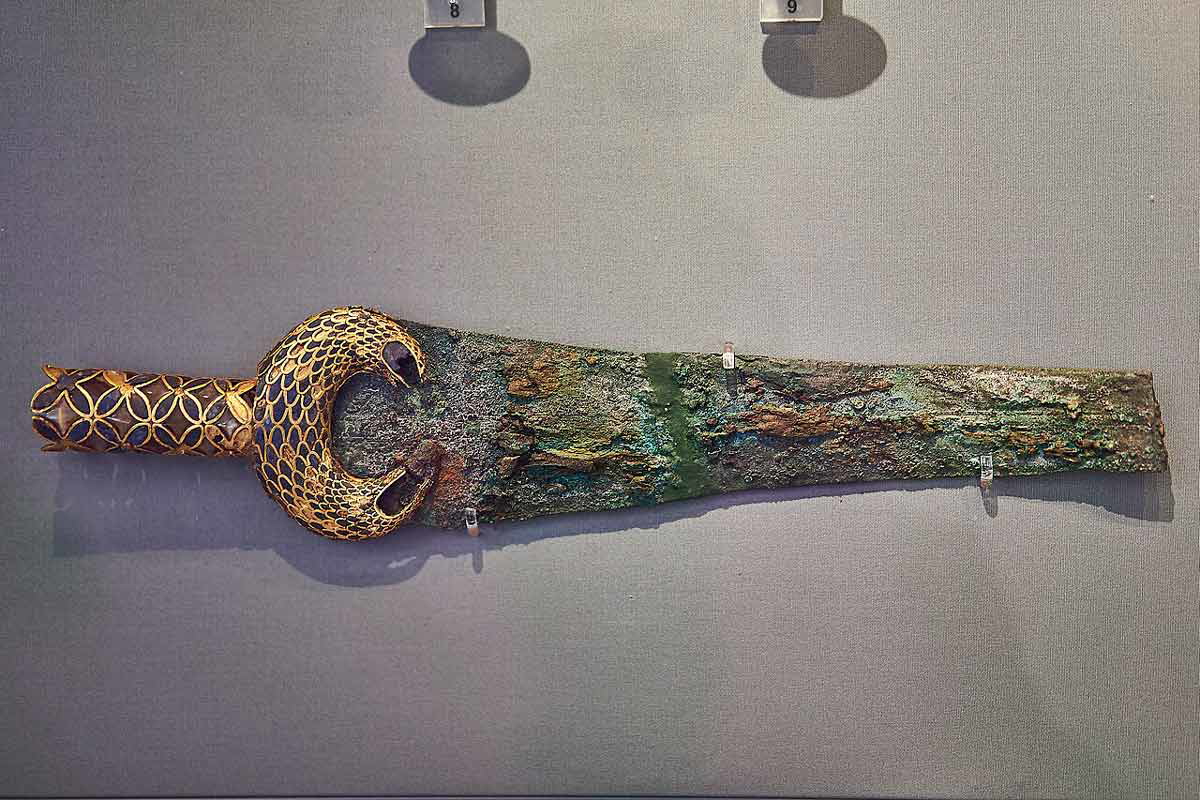
Another example of this principle is seen in Homer’s references to weapons made of bronze. It is true that he does describe such weapons. However, he also describes weapons and armor made of gold, silver, and tin. Needless to say, this is entirely impractical and bears no relation whatsoever to the real world. Such descriptions do not match any historical era. Therefore, why should we conclude that references to bronze weapons are any more historically significant than the references to weapons of gold, silver, and tin? Evidently, Homer was describing his warriors with plenty of artistic flourish, with no concern for historical accuracy and practicality. Since bronze was a more prestigious or “glorious” metal than iron, it makes sense that he would give his heroes weapons of bronze.
On the other hand, there is no reason for Homer to have exaggerated or stylized simple tools. Unlike weapons, there is nothing prestigious about a tool. Significantly, Homer describes the tools as being made of iron, not bronze.
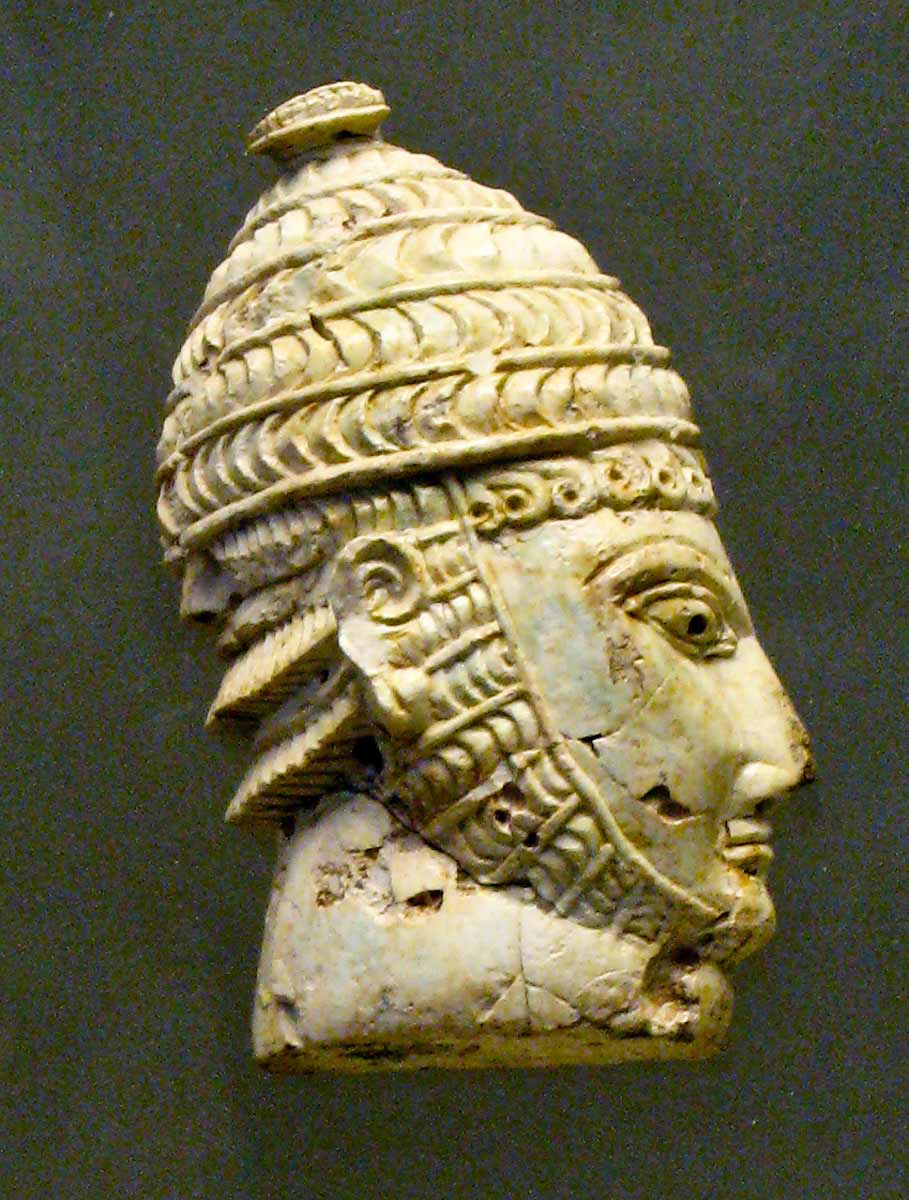
However, something which cannot be explained through this principle of stylistic flourish and exaggeration is the boar’s tusk helmet used by Odysseus at one point. Homer describes this helmet in detail, explaining that it was made of many rows of ivory from boar tusks. This cannot be understood as an exaggerated version of something that was used in Homer’s time, because nothing like that existed in the 7th century BCE.
The Greeks of the Archaic Era were in the habit of opening up Mycenaean tombs. Based on this fact, Hans van Wees suggested that Homer had come to be aware of a boar’s tusk helmet that had been found in such a tomb, and he chose to include it in the Iliad because it was so interesting. However, the true explanation is probably simpler. Archaeology has now revealed that boar’s tusk helmets continued to be used until c. 800 BCE. Furthermore, Homer explicitly presents it as being a family heirloom that had passed down through several generations.
Chariot Warfare
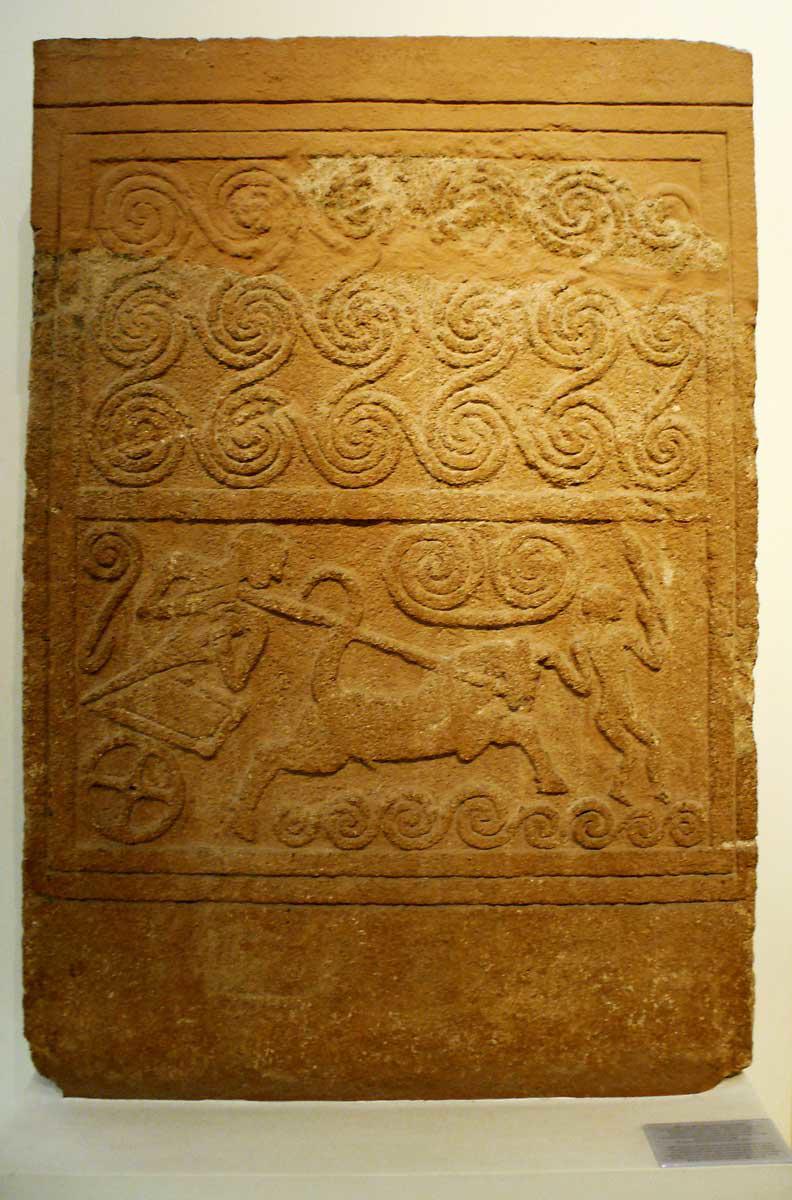
As mentioned earlier, a common claim is that Homer’s Iliad preserves a faint memory of the chariot warfare used in Mycenaean Greece. Of course, Homer’s descriptions of how the Greeks actually used chariots in warfare bear no relation to how the Mycenaeans used them. Hence, it is common to hear the claim that the Greeks were aware of the use of chariots in ancient warfare, but had forgotten how they were used.
Another obvious possibility is that Homer’s descriptions do not match how chariots were used in the Bronze Age because his descriptions simply do not relate to Bronze Age warfare. In fact, we know that the Greeks in the Archaic Era continued to use chariots. The way in which Homer describes them as being used is virtually identical to how pottery depictions show horses as being used in his time. They were used to bring a warrior swiftly to the enemy, the warrior then dismounting to fight. This is exactly the same as how the warriors of Cyrene used their chariots, as well as the Celts of the Iron Age.
The Geopolitical World of the Iliad
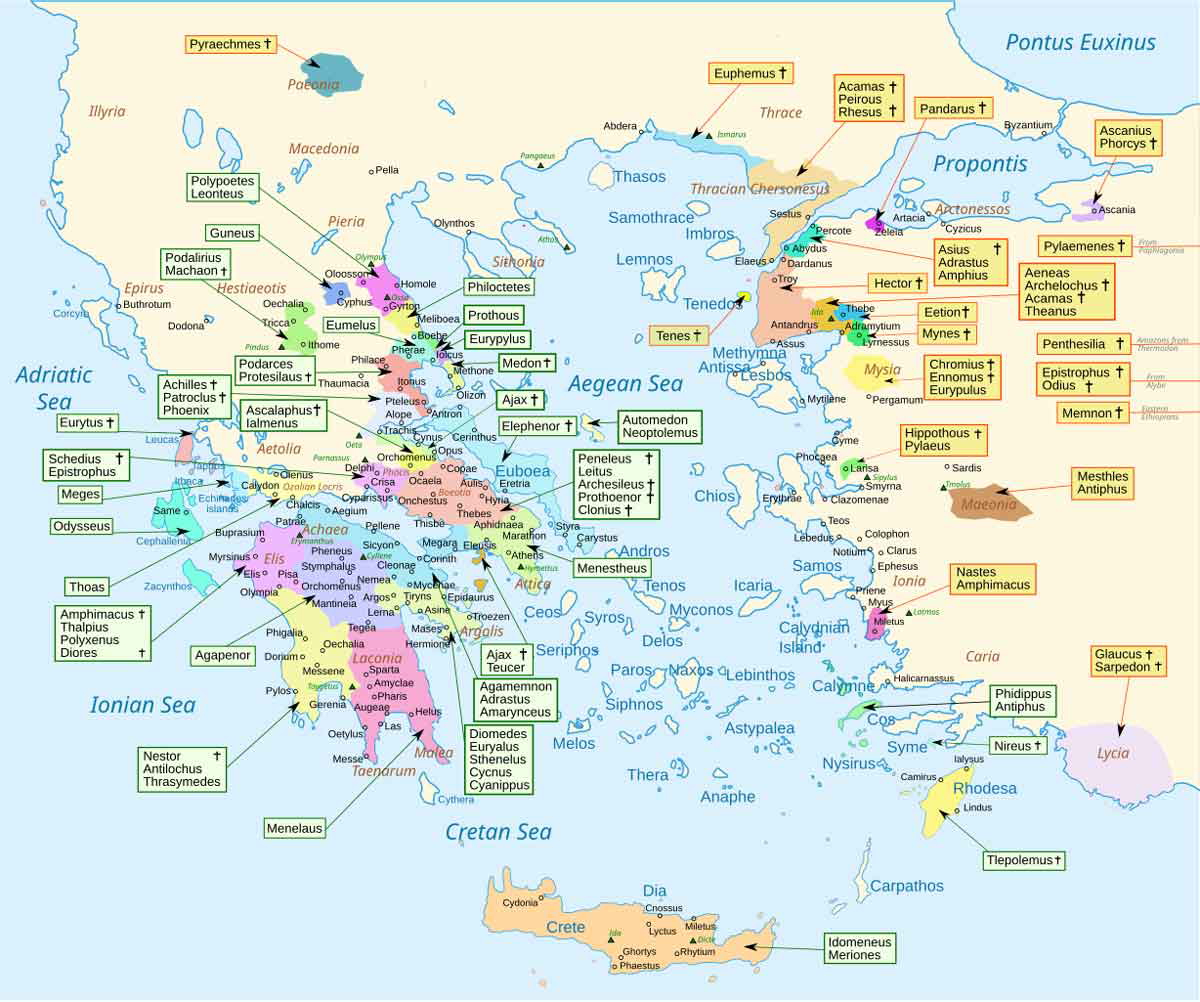
Beyond the warfare described in the Iliad, there is also the issue of the geopolitical world that the poem presents. Crucially, Agamemnon, the leader of the Greeks, is described as ruling over Mycenae. The only era in which Mycenae was the preeminent city-state in Greece was the Mycenaean Era in the Bronze Age. However, does this mean that Homer was describing the world of Mycenaean Greece? In the past, scholars interpreted Homer’s Catalogue of Ships as being a reflection of that ancient era. However, Homeric scholars today generally agree that it is basically a reflection of Archaic Greece, albeit not necessarily completely historically accurate.
Regarding Mycenae in particular, scholar Jonas Grethlein noted that Homer’s descriptions of Agamemnon’s realm do not match the dominion of Mycenae as discerned by Bronze Age Linear B records. Furthermore, the Iliad associates Agamemnon with Argos far more than with Mycenae, which is actually almost never mentioned. Notably, Argos was indeed the preeminent city-state of the Peloponnese in the late-8th and early-7th centuries BCE.
Does Homer’s Description Really Match the Bronze Age?
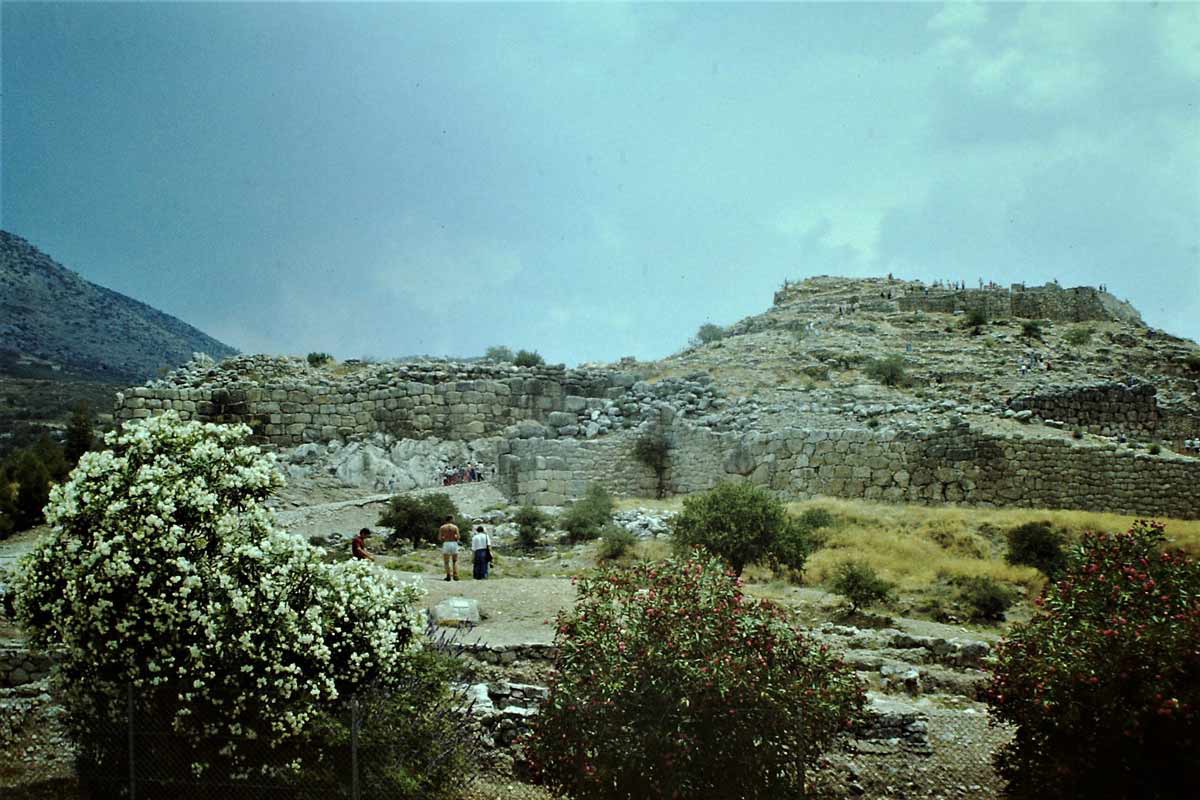
In summary, Homeric scholars of the past regularly viewed the Iliad as preserving, to one degree or another, a memory of the Bronze Age. Supposed examples of such Bronze Age features are tower shields, long Mycenaean spears, bronze weapons, and boar’s tusk helmets. However, in recent decades, Homeric scholars have generally taken a different view of the Iliad. After all, it is clearly not a historical account. Regardless of whether the Trojan War really happened or not, the Iliad is mythology. Hence, the excessively long spears and the shield going down to Ajax’s feet can be understood simply as exaggerated versions of Archaic Era equipment. The same can be said about the bronze weapons, which are no more historically significant than the weapons of gold, silver, and tin. The boar’s tusk helmet, on the other hand, is a genuine Bronze Age feature which is now known to have continued to be used near the start of the Archaic Era.
In reality, all of the supposed Bronze Age elements in Homer’s poems can be understood comfortably in the context of Homer’s own era.
